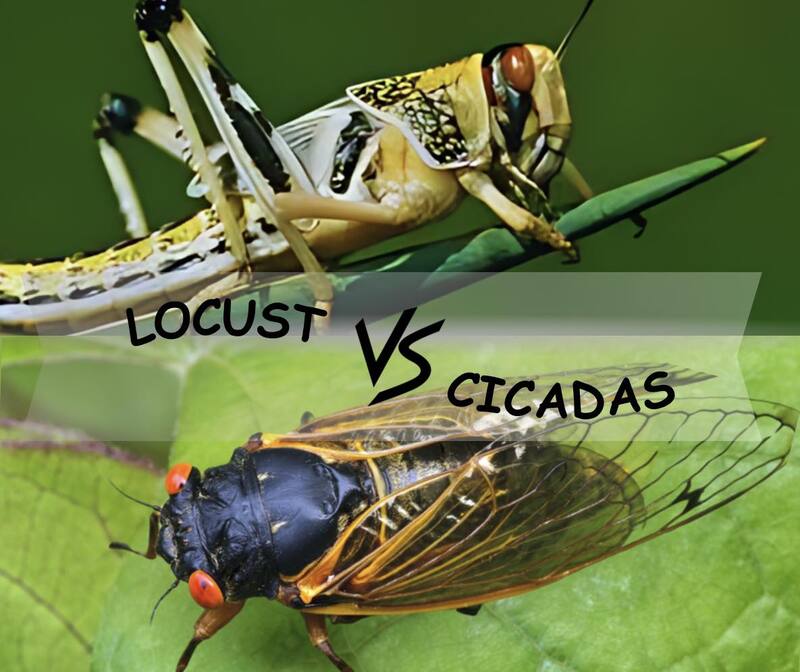Every few years, headlines scream about “invasions” of noisy bugs emerging by the billions—only to confuse the culprits. Are they locusts or cicadas? Though the terms are often used interchangeably, these two insects are not just different species—they belong to entirely different orders of insects with vastly distinct behaviors, lifecycles, and ecological impacts.
Let’s break down the key differences and put this centuries-old mix-up to rest.

| Feature | Cicada | Locust |
|---|---|---|
| Order | Hemiptera (true bugs) | Orthoptera (like grasshoppers) |
| Family | Cicadidae | Acrididae |
| Related to | Aphids, leafhoppers | Grasshoppers, crickets |
Despite both being insects, cicadas and locusts are not closely related. Cicadas are true bugs, while locusts are a type of short-horned grasshopper known for their destructive swarming behavior.
Cicadas are typically 1–2 inches long with bulging eyes, short antennae, and transparent wings that extend well past their body. They often have vibrant colors like black, green, or red.
Locusts, on the other hand, resemble large grasshoppers with longer hind legs for jumping and leathery wings. They're usually brown, green, or yellow.
Life Span: Most live 2–5 years; some species (like periodical cicadas) live 13 or 17 years underground.
Emergence: Synchronized, dramatic surface emergence to mate.
Behavior: Do not swarm, feed lightly on tree fluids, and do not destroy crops.
Sound: Males produce a deafening mating call, reaching over 100 dB.
Life Span: Weeks to months.
Behavior: Usually solitary—but under the right conditions, they undergo a phase change and form massive, migrating swarms.
Destruction: Swarms of billions can devastate entire farms and ecosystems.
Cicadas are harmless and even beneficial. Their emergence aerates soil, their bodies nourish wildlife, and they pose no threat to crops.
Locusts are among the most feared agricultural pests, known for triggering famines throughout history by wiping out crops across vast regions.
The confusion dates back centuries. Early American colonists referred to the sudden emergence of periodical cicadas as "locusts" due to the overwhelming numbers—reminiscent of the biblical plagues. But the name stuck, despite the scientific inaccuracy.
In truth, “locusts” are grasshoppers with a swarming phase, while cicadas are loud, but harmless bugs with one of the most fascinating lifecycles in the insect world.
| Feature | Cicada | Locust |
|---|---|---|
| Classification | True bug | Grasshopper |
| Lifespan | Up to 17 years (mostly underground) | A few months |
| Behavior | Sing loudly, emerge in cycles | Form crop-destroying swarms |
| Harm to Humans | None | Can cause famine |
| Cultural Confusion | Often misnamed “locusts” in the U.S. | Correct biblical “plague” insects |
If you're seeing hordes of buzzing insects crawling out of the ground in spring and blanketing trees with deafening noise—they're cicadas, not locusts. These misunderstood marvels may be loud, but they’re a fleeting, harmless phenomenon that offers a window into the complexity of insect evolution.
On the other hand, if you’re dealing with a flying carpet of crop-eating insects moving across continents, then yes—you've got a locust problem.
animal tags: Locust-vs-Cicada
We created this article in conjunction with AI technology, then made sure it was fact-checked and edited by a Animals Top editor.